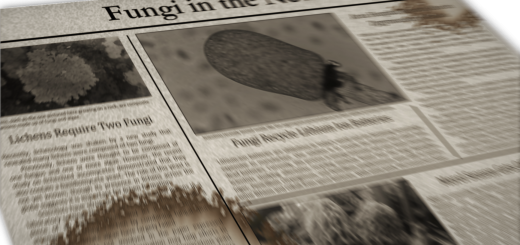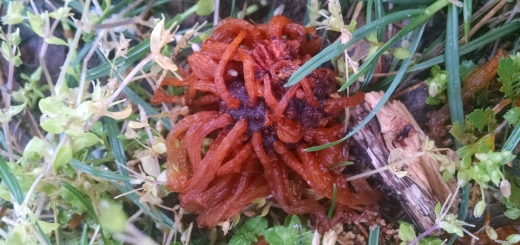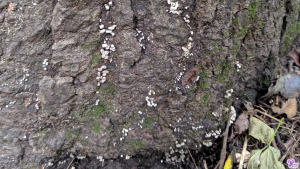#010: Fungal Fossils
It may surprise you to learn that fungi are reasonably well represented in the fossil record. Most of these fossil fungi are microscopic and lack reproductive structures. Additionally, it is often difficult to infer their ecology, making positive identification difficult, if not impossible. Fossil fungi are often found inside fossilized plant tissue. This includes fossils of mycorrhizae, plant pathogens, and wood decomposers. Many of these finds come from Rhynie Chert in Scotland, which dates to the Devonian period (around 400 million years ago, characterized by small land plants and the first forests). This is around the same time of the first fossilized land plants. The fact that mycorrhizae were already well-established by this time suggests that fungi were instrumental in helping plants colonize the land. The best-preserved fossil fungi are found in amber, often growing on insects. A mosquito trapped in Baltic amber (from the Eocene period, around 47 million years ago, as modern mammal lineages emerge) was found to have a number of parasitic fungi growing on its surface. The interesting thing about this is that these fungi resembled modern fungi that inhabit insect guts. This find brought new insight to when fungi made the switch from a pathogenic to a mutualistic ecology. One amber specimen was found to contain a tiny, ancient mushroom that had a parasitic fungus growing on its gills. The parasitic fungus, in turn, had another fungus parasitizing it. Such complex systems of parasitism are known to exist today, but they were evidently well-established 100 million years ago (during the Cretaceous period, contemporary with late dinosaurs). The one thing that is almost absent from the fossil record is mushrooms. The fleshy, fungal fruiting bodies rarely get fossilized (the mushroom preserved in amber, mentioned above, is one of the few mushroom fossils). Another notable exception was only recently identified as a mushroom. The mystery organism was widespread around 400 million years ago. It grew to a height of 24 feet at a time when the tallest plants were no more than 7 feet tall. Other hypotheses on the identity of the organism included lichen or algae. However, carbon isotope ratios indicated that it was heterotrophic, like modern fungi. The earliest known fossil fungi are chytrids from the Vendian period (about 570 million years ago, appearance of soft-bodied animals). Chytrids are water-dwelling fungi, which indicates that fungi first evolved in water and later moved to land (no surprises there). Because fungi are particularly good at attaching to a variety of substrates—like rocks, for example—and breaking them down, it has been proposed that fungi were the first eukaryotes to colonize land. Early land fungi were probably similar in ecology to lichens, but there is no fossil record to confirm this hypothesis.
See Further:
http://news.nationalgeographic.com/news/2007/04/070425-fungus-fossil.html
http://www.ucmp.berkeley.edu/fungi/fungifr.html
http://www.abdn.ac.uk/rhynie/fungi.htm
http://www.mykoweb.com/articles/How-Plants-Colonized-Land.html









![#011: Characteristics of Kingdom Fungi [Archived]](https://www.fungusfactfriday.com/wp-content/themes/hueman/assets/front/img/thumb-small-empty.png)

